Bird nests can be fascinating to observe, offering a glimpse into the intricate world of avian life.
However, when these nests appear in inconvenient or potentially damaging locations, finding ways to manage their presence becomes essential.
Whether perched on your porch, nestled in your chimney, or lodged in other critical spots, addressing the issue of unwanted bird nests requires a balanced approach that considers both human concerns and the well-being of these feathered inhabitants.
From legal considerations to ethical responsibilities, the process of getting rid of bird nests demands careful thought and appropriate action.
This article delves into how to clean a bird bath, providing a comprehensive guide for striking the right balance between human habitat needs and avian preservation.
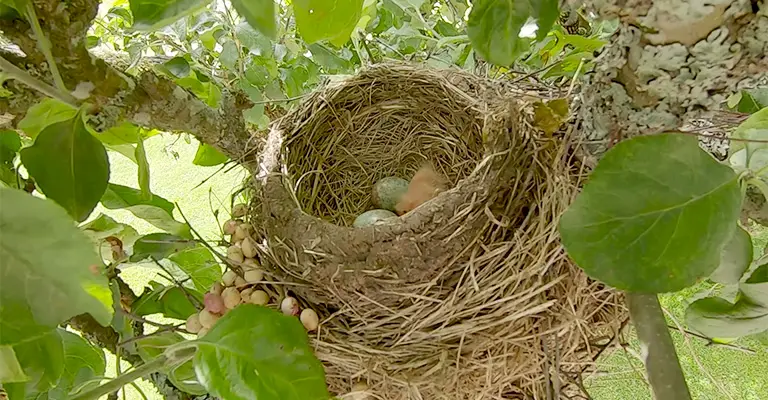
How To Get Rid Of Birds Nest?
Getting rid of a bird’s nest can be a tricky task, depending on where the nest is located and what kind of bird made it.
Some birds are protected by law, and you may need to check with your local authorities before removing their nests.
Here are some general steps you can follow to get rid of a bird’s nest safely and humanely:
Locate And Identify The Nest
The first step is to find out where the nest is and what kind of bird built it. You can use a binocular or a camera to get a closer look at the nest and the bird.
You can also search online for images and descriptions of different bird species and their nests. Some common places where birds build nests are trees, shrubs, eaves, gutters, chimneys, vents, attics, porches, and balconies.
Check If The Nest Is Active Or Inactive
An active nest is one that has eggs or baby birds in it. An inactive nest is one that has been abandoned by the birds or has no eggs or young ones.
You can tell if a nest is active by observing it for a few days and looking for signs of activity, such as the parents bringing food or the chicks making noise. You should never remove an active nest unless it poses a serious threat to the birds or to your property.
Removing an active nest may be illegal and harmful to the birds. If the nest is inactive, you can proceed to the next step.
Remove The Nest Carefully
Before you remove the nest, you should wear gloves and a mask to protect yourself from any parasites, bacteria, or diseases that may be in the nest.
You should also use a tool, such as a broom or a rake, to reach the nest and avoid touching it directly. Gently detach the nest from its location and place it in a plastic bag.
Tie the bag securely and dispose of it in a trash can away from your house. You can also add the nest to a compost pile or leave it in a secluded area where other birds may reuse it.
Clean And Sanitize The Area Where The Nest Was
After you remove the nest, you should clean the area thoroughly to get rid of any remaining debris, droppings, or feathers.
You can use soap and water, bleach, vinegar, or a commercial cleaner to disinfect the surface and prevent any stains or odors.
You should also check for any damage that the nest may have caused, such as holes, cracks, leaks, or fire hazards, and repair them as soon as possible.
What Are Some Common Birds That Build Nests?
There are many different kinds of birds that build nests, and each species has its own style and preference.
Some of the common birds that build nests are:
Hummingbirds
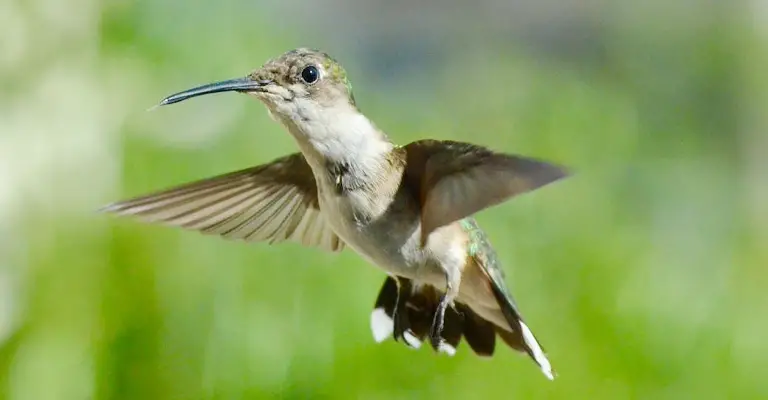
These tiny birds build small, cup-shaped nests that are often decorated with lichen, moss, or spider silk. They use plant fibers, feathers, and down to line their nests and make them soft and cozy.
Hummingbirds usually build their nests on tree branches, but they can also use vines, wires, or other structures. Hummingbirds are very good at camouflaging their nests to avoid predators.
Woodpeckers
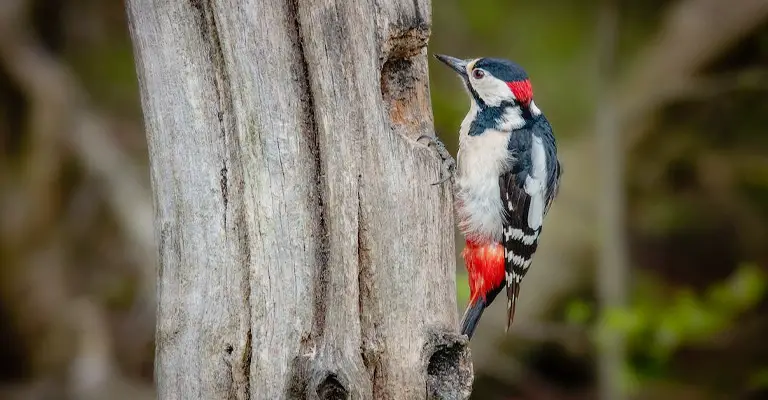
These birds are experts at carving out holes in trees or wooden posts to make their nests. They use their strong beaks and feet to excavate the cavity and remove the wood chips.
They may also use mud, grass, or feathers to line the inside of the hole. Woodpeckers usually choose dead or dying trees for their nests, as they are easier to drill and less likely to harm living trees.
Owls

These nocturnal birds often use natural cavities or old nests made by other birds or animals for their nests. They may also use platforms, ledges, or burrows to lay their eggs.
Owls do not add much material to their nests, except for some feathers or fur from their prey. Some owls, such as barn owls, may nest in buildings or barns.
Ospreys
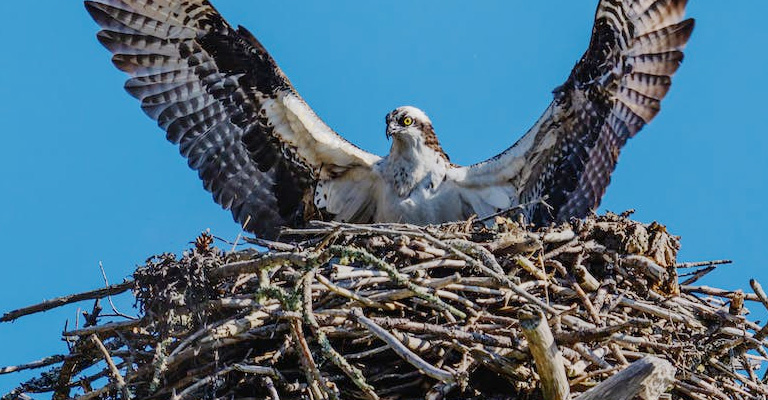
These large raptors build huge platform nests made of sticks, twigs, grasses, seaweed, and other materials. They usually build their nests on tall structures near water, such as trees, poles, towers, or bridges.
Ospreys reuse and add to their nests every year, making them bigger and stronger over time. Some osprey nests can weigh up to a ton.
Robins
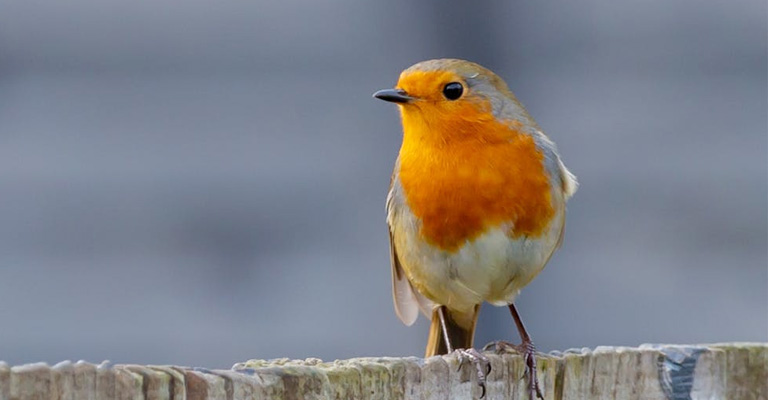
These familiar songbirds build cup-shaped nests made of mud, grass, twigs, and other plant materials. They usually build their nests on forks of tree branches, but they can also use ledges, eaves, or artificial structures.
Robins use their beaks and feet to shape the nest and smooth the mud lining. They may also add soft materials such as feathers or hair to cushion the eggs.
These are just some examples of the common birds that build nests. There are many more types of nests that different birds create, such as scrape nests, burrow nests, mound nests, pendant nests, and woven nests.
Each nest is a unique masterpiece that reflects the bird’s behavior, habitat, and adaptation.
Why Stop Birds from Building Nests on Your House?
While birds are fascinating and essential members of the ecosystem, there are several reasons why you might want to discourage them from building nests in your house.
It’s crucial to approach this matter with sensitivity and consideration for both the birds and your property.
Here are some reasons to consider:
Structural Damage
Bird nests can cause structural damage to your house over time. Nests built in gutters, vents, or eaves can block proper drainage and ventilation, leading to moisture issues, decay, and potentially expensive repairs.
Health and Hygiene Concerns
Accumulated bird droppings and nesting materials can harbor parasites, bacteria, and fungi, posing health risks to you and your family. These substances can also attract insects, causing an additional nuisance.
Fire Hazards
Nests built near chimneys or vents can become fire hazards. Dry nesting materials can easily catch fire from sparks or heat emitted by these structures, potentially endangering your home.
Property Aesthetics
Bird nests can be unsightly, affecting the visual appeal of your property. Accumulations of nesting materials can give your home a neglected appearance and detract from its overall curb appeal.
Noise and Disturbance
Some birds can be noisy, especially during the breeding season when they’re actively defending their nests or feeding their young. This noise can disturb your peace and quiet indoors.
Allergens
Bird feathers, droppings, and nesting materials can release allergenic particles into the air, triggering allergies and respiratory problems in susceptible individuals.
Insect Attraction
Bird nests can attract insects like mites, ticks, and other pests that can subsequently invade your home.
Recurring Nests
Birds are creatures of habit and might return to the same nesting sites year after year. Discouraging nests now can prevent recurring issues in the future.
Legal and Ethical Considerations
Disturbing active nests of protected bird species can be illegal and ethically concerning. However, if the species isn’t protected and the nest isn’t active, it’s important to address the situation with care.
Alternative Nesting Sites
By deterring birds from nesting in your house, you can encourage them to use alternative nesting sites that are more suitable and less intrusive, such as nesting boxes or trees in your yard.
When deciding whether to stop birds from building nests in your house, it’s important to balance your concerns with the well-being of the birds and the environment.
If you’re uncertain about how to proceed, consulting with local wildlife experts can provide insights into the best approach that ensures both your property’s integrity and the welfare of the birds.
FAQ
Observe the nest from a distance for a few days. Active nests have birds frequently coming and going, while abandoned nests remain undisturbed for an extended period.
The legality depends on the bird species and local regulations. Many birds are protected, so ensure you’re not violating any laws before removal.
The best time is when the breeding season is over, and the nest is no longer in use. Wait until birds have moved on to avoid disrupting their reproductive cycle.
Install visual deterrents like reflective tape or physical barriers such as bird spikes. Keep your property clean, and consider providing birdhouses as alternative nesting spots.
If the nest is inactive and doesn’t belong to a protected species, you can remove it gently with gloves.
However, for active nests or uncertainty, consulting professionals are advisable to ensure proper handling and compliance with regulations.
Conclusion
In the endeavor to manage and potentially remove bird nests from undesirable locations, a delicate harmony must be struck. Preservation of both human property and the natural world is paramount.
Understanding local regulations and ethical considerations, as well as determining nest activity, are pivotal in making informed decisions.
While the desire to maintain a safe and clean environment is valid, it’s equally vital to recognize the significance of birds in our ecosystem.
By adopting responsible practices, seeking professional guidance when needed, and exploring alternative nesting solutions, we can coexist with these creatures while safeguarding our homes.
Ultimately, the journey to address bird nests should be characterized by empathy and mindfulness, ensuring that our actions respect the delicate balance of nature that we all share.
.